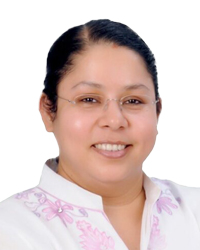|
INDIA |
India’s evolving IP ecosystem has garnered significant global attention. This article aims to highlight important patent provisions and provide updates on relevant patent-related developments in the country.
FOREIGN FILING LICENCE
India’s patent law includes a provision for a foreign filing licence (FFL), which requires prior approval and has criminal penalties for non-compliance. Despite ongoing discussions among various stakeholders of the patent system about the need to decriminalise such provisions, the FFL requirement remains in effect.
An Indian resident inventor must submit a brief disclosure of the invention to the Indian Patent Office (IPO) before filing the first application outside the country. The IPO will scrutinise the disclosure to ensure it does not pertain to defence or atomic energy, and within three weeks issues the FFL to the inventor, allowing them to proceed with the filing. Alternatively, the applicant can file the first application in India instead of obtaining the FFL from the IPO. If there are no objections from the IPO within six weeks, the applicant can proceed to file applications outside India. If there are any concerns about filing applications abroad, the IPO may issue secrecy directions to the applicant, but this is a rare case.
PATENT FILING AND AMENDMENTS

Founder Partner
LexOrbis
New Delhi
Tel: +91 98 1116 1518
Email: manisha@lexorbis.com
The IPO accepts applications in English, eliminating the need for translations into native languages and resulting in a significant reduction in overall patenting costs compared to other jurisdictions that require translations. India’s official fees for patent filing are notably lower than most patent offices worldwide.
Indian patent law also allows applicants to drop certain claims when entering the national phase. This flexibility can help save on excess claim fees and expedite the process by removing claims directed towards non-patentable subject matter in India. However, it’s important to note that once the application is filed, any amendments can only be made through disclaimers, explanations or corrections. All amendments must be supported in the specification, and claims cannot be broadened beyond their original scope once filed.
PROSECUTION PROCEEDINGS
The patent prosecution process in India commences with the request for examination. Significant progress has been made in clearing the backlog of pending applications, resulting in faster examination, typically taking less than a year from the date of request.
On receiving the first examination report, the applicant is granted six months to respond to any objections raised. If the applicant successfully addresses all objections, a patent is directly granted. If there are still outstanding issues, an oral hearing is scheduled, providing the applicant with an opportunity to present their case. Following the hearing, a decision is issued. In cases where the decision after the oral hearing is unfavourable, the applicant has two possible remedies. The first is to file a review petition before the patent office, seeking a reconsideration. The second is to file an appeal before a high court, presenting the case to a higher judicial authority for further examination.
DIVISIONAL APPLICATIONS

Partner
LexOrbis
New Delhi
Tel: + 91 97 1126 2818
Email: joginder@lexorbis.com
A divisional application in India can be filed at any time before the grant or refusal of its parent application. Due to the lack of advance notice regarding the disposal of a patent application, it is advisable to file the divisional application at the earliest opportunity. To be considered valid, the divisional application must arise from a parent application that discloses multiple inventions, with distinct claims not overlapping with those of the parent application.
For the independent claims of divisional applications, it is preferable to include at least one novel and inventive feature that was not claimed in the parent application. Additionally, these claims should be adequately supported within the description of the parent application. The decision to file a divisional application can be voluntary, or in response to a lack of unity objection from the IPO. The current position on the maintainability of voluntary divisional applications in India may appear complex compared to other jurisdictions. A recent case, Boehringer v Controller of Patents DHC (2022), established a restrictive interpretation of laws governing divisional applications, requiring that the claims of the divisional application must be derived from the claims of the parent application.
In July 2023 another judge of the IP division found that the aforesaid legal position appears to be not supported by the statutory provisions and therefore referred that question before the chief justice of the high court for constituting a two-judge bench to examine the issues related to the filing of voluntarily divisional applications and on maintainability of claims in divisional that are carved out from the disclosure and not necessarily from claims. The aforesaid question is still under consideration and hopefully, the larger bench would clear the mist around divisional applications in India.
Applicants may have the option to introduce claims meant for a divisional application into the parent application. According to a recent ruling by Delhi High Court in Nippon A&L v the Controller of Patents (2022) and Allergan v the Controller of Patents (2022), as long as the invention is disclosed in the specification, and the claims are limited to the disclosures already made, such amendments should not be rejected, particularly during the examination before grant stage.
If such claims get accepted in the parent application, that should be good enough for the applicant. Otherwise, the patent application will receive an objection for lack of unity or newly added subject matter. Such an objection supplies a legitimate ground for the applicant to pursue the objected claims through a divisional application.
DISCLOSURE OF FOREIGN FILING
Under Indian patent law, this legal requirement can be divided into two distinct parts. The first part, known as the section 8(1) requirement, obligates the applicant to provide a comprehensive list of all corresponding applications filed outside India voluntarily and whenever requested.
These corresponding applications encompass applications stemming from a common priority or Patent Co-operation Treaty (PCT) application, along with all PCT national phases, continuation, continuation in part, and divisional applications within the same patent family. The necessary details must be submitted on form 3 at the time of filing the Indian patent application, or within six months after. If any new corresponding application is filed outside India, its details must be promptly provided to the IPO on form 3 within six months.
The second part, governed by section 8(2), pertains to the requirement of supplying copies of the search or examination reports, and the granted claims of corresponding applications, to the IPO only when requested.
As the IPO has become a providing office for the World Intellectual Property Organisation’s centralised access to the search and examination system, controllers can access reports of corresponding applications through this system.
WORKING STATEMENT
One unique provision in Indian patent law is the requirement of a working statement, which outlines the details of how the patented invention is being used. The government has simplified the format and procedures for this process. The new form 27 no longer necessitates the supply of the “quantum” of patented products manufactured and/or imported into India. There is no longer a requirement to provide details of licences issued in any given financial year in the working statement, or to ascertain whether the reasonable requirement of the public has been met by the patented product.
The due date for filing the annual working statement has been shifted from 31 March to 30 September, and the covered period has also been changed from the calendar year (January to December) to the financial year (April to March). No working statement must be filed for the financial year in which the patent is granted.
Another noteworthy change is that one working statement can now be filed for multiple related patents. This applies when it is not feasible to derive the approximate revenue or value gained from a particular patented invention separately from related patents, and all such patents are granted to the same patentees.
The patent co-owners have the option to jointly file one working statement for one or related patents. However, each licensee needs to file their statements separately, demonstrating how they are utilising the patented invention. Recently, stakeholders are engaged in discussions to examine if there is a need of incorporating SEP-related information into the working statement format. Patentees should monitor the progress of these discussions for any advancements.
IP DIVISIONS
The Indian government has abolished the Intellectual Property Appellate Board (IPAB), which formerly served as the appellate authority for hearing appeals arising from IPO decisions. Following this, Delhi High Court was the first to establish an IP division to exclusively handle all IP-related cases, including those transferred from the IPAB, and introduce the IP Division Rules and the Rules Governing Patent Suits.
The Madras High Court has also created an IP division, as well as notified the IP Division Rules and the Rules Governing Patent Suits to govern these proceedings. It is expected that other high courts across India may adopt a similar approach. The creation of specialised IP divisions and the implementation of corresponding rules can significantly enhance the resolution of IP matters, offering a more efficient and dedicated platform for addressing IP disputes.

709/710 Tolstoy House
15-17 Tolstoy Marg
New Delhi – 110 001, India
Tel: +91 11 2371 6565
Email: mail@lexorbis.com






























